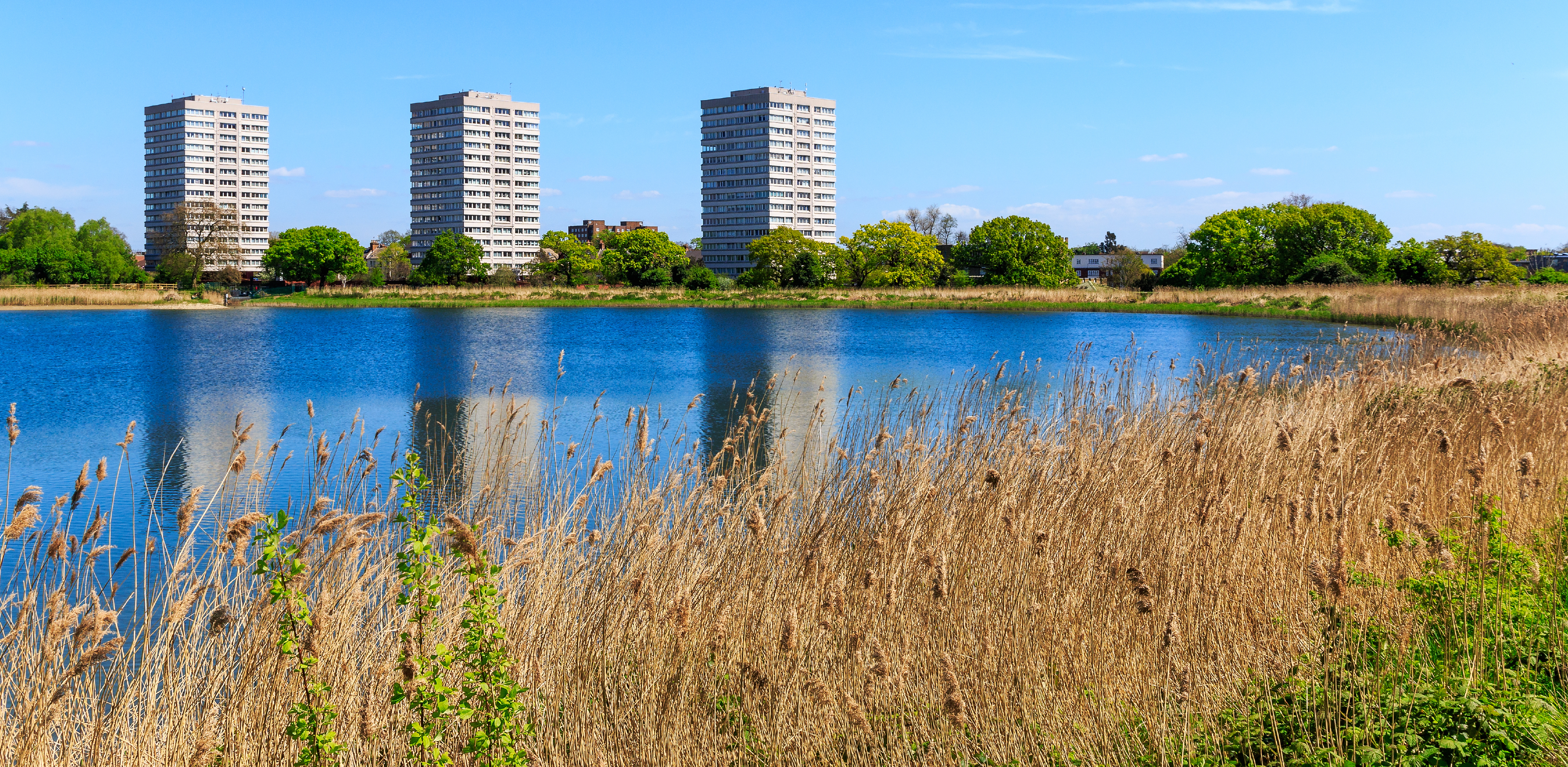South East Section Members Explore Greenwich Peninsula Ecology Park
Sylvia Myers, South East England Section Committee Secretary
The CIEEM South East Section Annual Members’ Meeting was held on 24 March at the Greenwich Peninsula Ecology Park in South London, owned by The Land Trust and managed by The Conservation Volunteers (TCV). 38 CIEEM members from the South East region attended, including 12 committee members.
The day began with a short introduction to the site from Sara Harrison (TCV) and Simon Pile (Land Trust). Simon explained briefly the split of responsibilities between the Land Trust and TCV, saving a full explanation until tours planned for later in the day.
Craig Llewelyn (SE Section Convenor) summarised the work of the committee, introduced committee members and described events we ran over the previous year. Particular attention was drawn to the success of the Invasive Species discussion workshop held at AECOM, which attracted 60 people (about half of whom were not CIEEM members) and received much positive feedback. Outcomes of the discussions fed into the PCA International Invasive Weeds Conference 2018. Craig also described how the SE committee is feeding into consultations and contributed a response to DEFRAs recent Net Gain consultation. In future the committee hopes to respond to policy developments particularly relevant to the SE region and involve more SE members
Vicky Bowskill (CIEEM Member Networks Coordinator) gave an overview of how different regional committees operate and volunteering across CIEEM (19,000 volunteer hours in 2017/18). A more general overview of CIEEM was given by Max Wade (CIEEM President), describing how CIEEM contributes to professional practice, communicates with members and of course, tries to minimise its carbon footprint!
Debbie Bartlett (SE Section Vice Convenor) led a discussion about what members wanted from their local Section committee. Themes brought out were creating a balance of events – evenings as well as weekend site meetings, practical conservation as well as ecological themes and in a range of geographic locations. The new CIEEM website was popular and people commented they tended to get their information from the website rather than emails (these responses were reflected in the feedback).
Paul Hetherington (Buglife) talked about ‘Arresting insect declines and the role of B-lines’. He shared grim statistics of insect decline throughout the UK and across taxa, comparing to the more publicised but less severe declines in vertebrates. He talked briefly about important invertebrate areas in the South East, highlighting brownfield sites in the Thames basin. Paul then focussed on pollinators and their importance (both to us and other species such as the oil beetle) and decline. He then described the B-lines project (‘B’ for biodiversity not just bees, but bees have public appeal) which is mapping and connecting known pollinator habitat throughout the UK. The idea is to engage and give advice to organisations along the B-lines to create and improve habitat for pollinators (and other wildlife). More information about B-lines can be found here: https://www.buglife.org.uk/b-lines-hub
Peter Massini (Greater London Authority) gave a talk about ‘Urban Greening – Infrastructure or Ornament?’ He built a picture of how we need to move away from seeing wildlife areas as separate from development and instead as an integrated part. He argued this gives more opportunities in terms of space, funding, engaging people in greenspaces and combining with other sustainability aims (for example cycle lanes and flood management). He gave case studies from across London, for example, Woodberry Down and Wetlands, the Olympic Village and Kidbrooke Village. This optimistic talk gave a positive outlook of how modern conservationists could choose to work with, rather than against, development. Peter suggested the following document for those who want more good examples and guidance on urban greening: https://www.interregeurope.eu/fileadmin/user_upload/tx_tevprojects/library/file_1551105810.pdf
The day finished with two tours of the site. Simon Pile (Land Trust) described how the site was originally created and how the Land Trust works with developers surrounding the site. He explained how the park is completely ‘unnatural’ with a whole range of artificially created habitats and a very complicated and expensive water management system (which has now lost most of its functionality). The site originally cost £10 million to create and £5 million was invested to pay for management of the site. Relationships with developers are mostly positive, for example, new green roofs draining into the site’s outer pond and allowing the Land Trust to create wildlife borders in Southern Park next door to the ecology park. However, Simon described how lines must be drawn and the Land Trust did object to a new tower which would have caused extensive shading. Joanne Smith (TCV) discussed the ecology and people involvement in the site. She talked about balancing visitors with wildlife needs, for example, by managing an area of long grass to give kids the feel of a ‘meadow’ but fencing other areas off for more delicate wildlife. She described the marvellously diverse shingle beach habitat which is unlike any natural beach with stones from all over the UK and the work of keeping the area from succession being done by volunteers rather than natural forces. More information about the Greenwich Peninsula Ecology Park can be found here (it is free to visit and open most days): https://www.tcv.org.uk/greenwichpeninsula
The SE Section Committee would like to thank all the Land Trust and TCV staff at the Greenwich Ecology Park for hosting the meeting, all the speakers for giving their time on a Sunday and Steve Crosby (Land Trust) for his role in organising the event.

